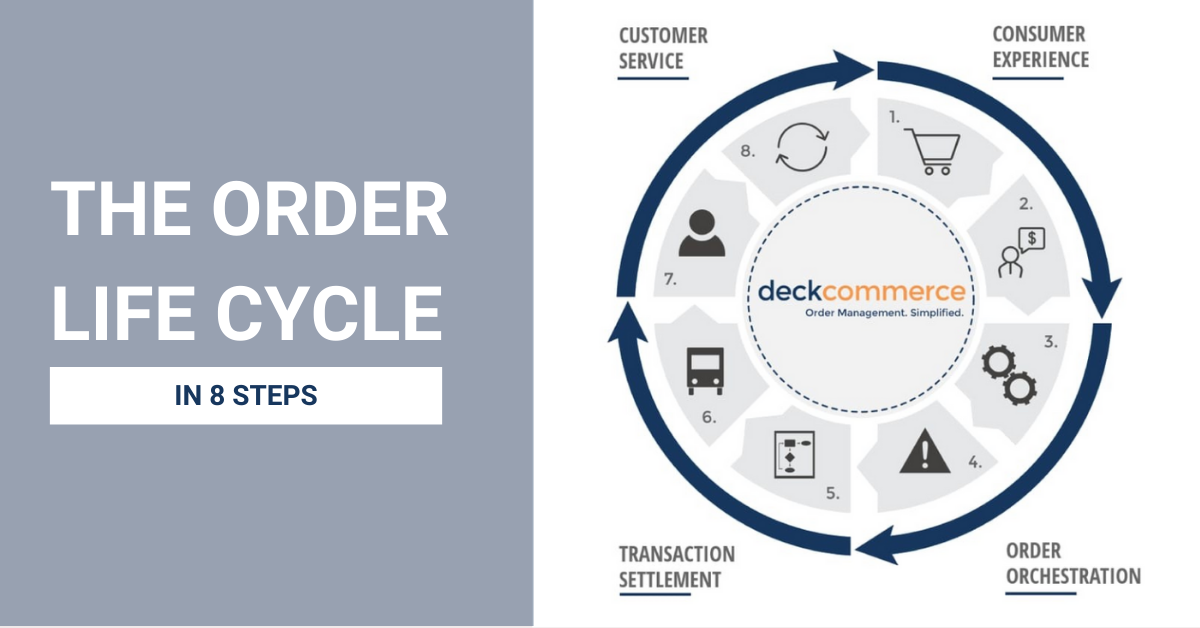
As digital marketplaces expand and consumer preferences shift towards convenience, DTC businesses must evolve or risk obsolescence. Optimizing and automating fulfillment processes is the key to maintaining competitiveness in the eCommerce space.
However, achieving automated order fulfillment is no easy feat. This is where scalable order management solutions come into play.
Order management systems serve as the technological backbone powering eCommerce fulfillment automation. They transform traditional logistics into a streamlined, automated, and customer-centric operation.
This blog explores how order management software enables automated eCommerce fulfillment and helps brands build strong customer relationships.
What is Automated Order Fulfillment & How Does it Benefit Retail eCommerce Stores?

Automated order fulfillment refers to using technology to streamline and manage the process of receiving, processing, packing, and shipping orders with minimal human intervention.
This automation is typically powered by an Order Management System (OMS) that integrates various components of the eCommerce ecosystem, ensuring efficiency and accuracy from the point of order placement to delivery.
6 Benefits of Automating Fulfillment Processes |
|
|
Increased Efficiency |
Automation accelerates the order fulfillment process, reducing the time from order placement to shipment. This speed is crucial for customer satisfaction and brand loyalty. |
|
Reduced Errors |
Manual order processing is prone to errors, leading to wrong items being shipped, incorrect quantities, or mismanaged returns. Automated systems significantly reduce these errors, ensuring customers receive the correct products promptly. |
|
Enhanced Customer Experience |
Fast, reliable order fulfillment leads to a better customer experience. Satisfied customers drive repeat business and word-of-mouth referrals. |
|
Scalability |
Automated systems can handle increased order volume without a proportional increase in errors or delays. This scalability is vital for growth, especially during peak sales periods or expanding the business. |
|
Cost Savings |
By streamlining the fulfillment process and reducing the need for manual intervention, eCommerce stores can lower their operational costs. These savings can then be reinvested in the business or passed on to customers through competitive pricing. |
|
Data Insights |
Automated systems collect data at every stage of the fulfillment process. These valuable insights can be used to optimize inventory management, forecast demand, and improve the overall customer experience. |
The Building Blocks of Automated eCommerce Fulfillment
An order management system eliminates the inefficiencies associated with disjointed systems by providing a single, integrated platform.
Here’s how order management systems enable automated eCommerce fulfillment and empower businesses to deliver exceptional customer service.
Integrating Disparate Systems for Reliable Data
Traditionally, eCommerce businesses have grappled with siloed systems where inventory management, order processing, customer interactions, and fulfillment operations run independently.
This disconnection leads to critical challenges, such as inconsistent data, delayed order processing, and a fragmented customer experience.
The OMS Solution
A sophisticated OMS acts as the central nervous system of eCommerce operations, integrating disparate systems into a unified platform.
An Order Management System like Deck Commerce ensures that every component communicates seamlessly, from the online storefront to the warehouse management system.
This integration enables businesses to:
- Automate Order Flow: From the moment a customer places an order to the final delivery, every step is automated and synchronized, reducing manual intervention and the potential for errors.
- Synchronize Inventory and Sales Channels: Real-time updates across all sales channels prevent overselling and understocking, ensuring that customers have accurate information and businesses can maximize sales opportunities.
- Enhance Customer Service: With integrated systems, customer service teams have immediate access to order status, inventory levels, and customer history, enabling them to provide informed and efficient support.
Optimized Order Orchestration & Smart Order Routing
Orchestration within an Order Management System (OMS) is a crucial function that efficiently aligns and manages eCommerce operations' various processes and components, directly supporting business objectives.
Order orchestration ensures that processes, from inventory management to customer delivery, operate not in isolation but as a coordinated whole, optimizing efficiency and enhancing customer satisfaction.
- Data Consistency: With all systems and processes synchronized, data remains consistent and accurate across the board, eliminating the confusion and errors that arise from disjointed data sources.
- Operational Efficiency: Automation of complex workflows and decision-making processes significantly reduces manual interventions, allowing staff to focus on strategic tasks and reducing the scope for human error.
- Customer Experience: The agility and responsiveness of an orchestrated OMS ensures that customers receive their orders promptly and accurately, boosting satisfaction and fostering loyalty. With enhanced visibility into order status and inventory, businesses can provide better customer service, further enhancing the shopping experience.
Smart Order Routing
This capability allows the OMS to analyze multiple factors—such as inventory locations, shipping times, and costs—to determine the most efficient path for each order.
For example, if a customer in New York orders a product, the OMS doesn't randomly select a fulfillment center. Instead, it assesses which location has the item in stock and can deliver it most quickly and cost-effectively, possibly choosing a warehouse in New Jersey over one in California.
Dynamic Fulfillment Strategies
Orchestration enables dynamic fulfillment strategies that adapt to real-time conditions. Whether it's split shipments, drop shipping, or leveraging store inventories for online orders, the OMS can make immediate decisions to optimize fulfillment.
This flexibility is crucial for handling unexpected scenarios, like a sudden spike in demand or a supply chain disruption, ensuring that businesses can maintain service levels without incurring unnecessary costs.
Enhanced Collaboration & Communication
Orchestration fosters enhanced collaboration and communication across different departments and systems. By providing a unified view of operations, teams can work together more effectively, whether it's coordinating between the warehouse staff and customer service representatives or aligning online and in-store strategies. This synergy prevents bottlenecks and ensures a consistent and cohesive approach to managing orders and serving customers.
Smarter Decision Making Through Real-Time Data
Real-time data and decision-making are pivotal in automated eCommerce fulfillment, enabling businesses to stay agile, responsive, and customer-focused.
An OMS that harnesses the power of real-time data streamlines operations and provides a competitive edge by ensuring that businesses can quickly adapt to market changes and meet customer expectations efficiently.
- Dynamic Inventory Allocation: The OMS can dynamically allocate inventory to different channels or fulfillment centers based on real-time demand and stock levels, ensuring efficient use of resources.
- Order Prioritization: Real-time data enables the OMS to prioritize orders based on delivery deadlines or customer value, ensuring that critical orders are promptly fulfilled.
- Predictive Analytics: With access to real-time data, businesses can use predictive analytics to forecast future demand, adjust inventory levels, and plan for seasonal fluctuations or promotional events.
- Customer Communication: An OMS with real-time data can provide customers with accurate, up-to-date information on their order status and expected delivery times, enhancing transparency and trust.

Scalability & Flexibility to Meet the Challenges of Modern eCommerce Retail
eCommerce businesses often face significant fluctuations in demand, influenced by seasons, promotions, and unpredictable market trends. During peak times, the volume of orders can skyrocket, putting immense pressure on fulfillment processes.
Similarly, businesses experiencing rapid growth must be able to scale operations quickly to capitalize on new opportunities without compromising service quality or operational efficiency.
Here's how an OMS can support these essential aspects.
How an Order Management System Supports Scalability & Flexibility |
|
|
Automated Scaling |
An OMS can automate various fulfillment processes, allowing businesses to handle a higher volume of orders without a proportional increase in errors or delays. This automation is key to scaling operations efficiently. |
|
Resource Optimization |
By intelligently allocating resources based on real-time data, an OMS ensures that businesses can maximize their use of inventory, labor, and shipping resources, especially during peak periods. |
|
Modular Architecture |
A scalable OMS typically features a modular architecture, which allows businesses to add or modify functionalities as needed. This adaptability is crucial for accommodating growth and changing business strategies. |
|
Integration Capabilities |
To support scalability, an OMS seamlessly integrates with other systems, such as eCommerce platforms, ERP systems, and shipping carriers. This integration ensures that expanding one business area doesn't create bottlenecks or inefficiencies in others. |
|
Customization Options |
A flexible OMS provides options for customization, allowing businesses to tailor the system to their unique needs and processes. |
|
Responsive to Market Changes |
The ability to quickly adjust fulfillment strategies, such as changing shipping methods or fulfillment centers, is vital for responding to market changes and maintaining customer satisfaction. |
Automation of Complex Processes
An OMS enhances efficiency and accuracy by automating intricate processes while significantly reducing manual errors and operational bottlenecks.
Here’s where automation within order management processes makes the biggest impact.
Streamlined Returns Management
Returns management is often a complex and cumbersome process. An OMS simplifies this by handling various aspects of returns — from generating return labels to managing stock restocking and processing refunds.
By automating returns management, an OMS not only streamlines internal processes but also turns potential customer dissatisfaction into loyalty by offering a hassle-free return experience.
Inventory Management & Replenishment
The system continuously monitors inventory levels, automatically triggering replenishment orders when stock falls below predetermined thresholds. This process prevents stockouts, ensures optimal inventory levels, and reduces the manual workload of monitoring and ordering stock.
Enhanced Accuracy & Reduced Inefficiencies
Automation minimizes the risk of human error, which is particularly crucial in processes that require high precision, such as order picking, packing, and shipping. An automated OMS directs these operations with accuracy, reducing the chances of incorrect shipments and improving overall operational efficiency.
Efficient Processing for Complex Orders
An OMS is a game-changer for businesses dealing with complex orders that involve bundling, kitting, or customizations. It coordinates various components and processes involved, ensuring that each order is processed accurately and efficiently, regardless of its complexity.
Omnichannel Fulfillment Capabilities to Meet Consumer Preferences
Today’s consumers expect flexibility and convenience. That means offering a seamless omnichannel experience is not just an advantage; it's a necessity.
An Order Management System (OMS) is crucial in powering these diverse fulfillment options, providing a cohesive experience across all channels.
Omnichannel Features Enabled by an OMS |
|
|
Ship-From-Store |
Enables stores to act as distribution hubs, optimizing order fulfillment based on geographical location and inventory availability, thus reducing delivery times and costs. |
|
Buy Online, Pick Up In-Store (BOPIS) |
Tracks inventory in real time to allow customers to order online and pick up at a local store, streamlining the reservation and pickup process. |
|
Buy Online, Return In-Store (BORIS) |
Manages the return process for online purchases in physical stores, quickly restocking items and enhancing customer satisfaction. |
|
Curbside Pickup |
Coordinates the process for customers to place orders online and pick them up curbside, improving convenience and maintaining inventory accuracy. |
|
Cross-Channel Visibility |
Offers a cohesive view of inventory and customer interactions across all channels, ensuring consistent and informed service no matter the customer's shopping method. |
By centralizing control and automating the coordination between various fulfillment processes, an OMS enhances operational efficiency and elevates the customer experience. Customers benefit from a seamless, integrated shopping journey, whether online, in-store or through a combination of channels.
Furthermore, it provides valuable insights into customer behavior and inventory trends across channels, enabling businesses to make data-driven decisions to optimize their omnichannel strategy.
An OMS is an indispensable tool in the modern retail ecosystem, whether it's adjusting inventory distribution, personalizing marketing efforts, or introducing new fulfillment options.
Automated Order Fulfillment Case Study
Learn how this global footwear retailer saved thousands of hours by automating 98% of order processes.
Read the full case study here →
How to Automate Order Fulfillment Processes Without Revamping Your Tech Stack
Deck Commerce OMS simplifies order management for retailers, offering essential out-of-the-box functionality and over 60 integrations. This ease of integration means you can automate and optimize your order fulfillment processes without overhauling your existing tech stack.
Deck Commerce provides the flexibility and modularity modern businesses need, enabling you to adopt automation and improve efficiency seamlessly. Upgrade your order management system with Deck Commerce and start streamlining your operations today.







.png?width=2000&height=2000&name=Blog%20Directory%20CTA%202000x2000%20px%20(2).png)






.png?width=2000&height=2000&name=Blog%20Directory%20CTA%202000x2000%20px%20(3).png)
